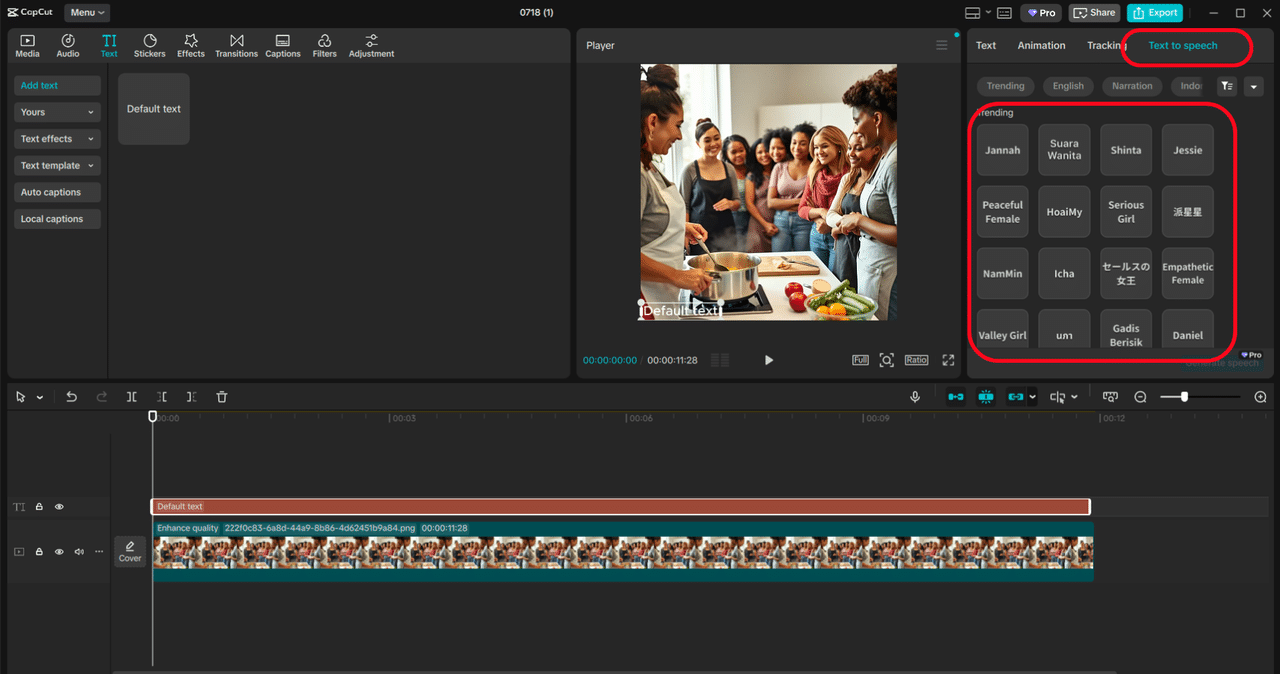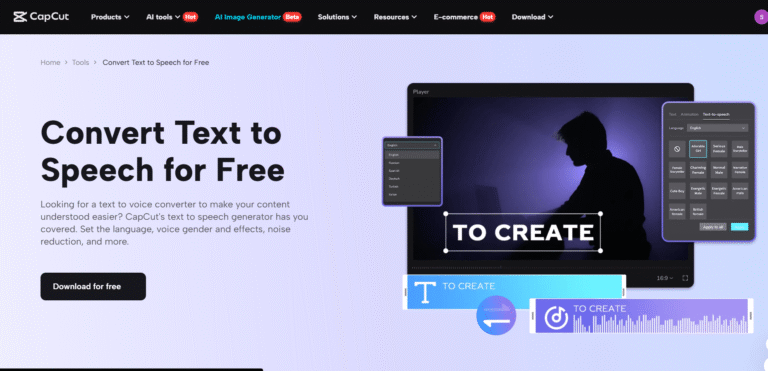Introduction
In the modern world, video in a digital kitchen can teach people how to prepare food and share recipes, secrets of meal preparation, and folk cuisine with a worldwide community. However, in the case of recording voiceovers for professional work or walking talkies, it is not convenient for everyone. CapCut PC can help at that point. Now you can impart the art of cooking by using its Text to speech AI option and clear AI-generated narration in your tone and style that ensures the delivery to your target audience. Be it’s writing TikTok recipe videos or establishing a YouTube cooking channel, the AI capabilities of CapCut can be used to produce appealing cooking content without voice recordings.
Why Use Text to Speech for Cooking Tutorials
Voiceover plays an important role in guiding viewers through step-by-step recipes. However, not all of them have a studio facility or the time to record and edit narration. Text-to-Speech AI addresses this issue in CapCut, which converts written texts into realistic sound through different voices, accents, and tones, making it ideal for telling stories about recipes.
In other words, you may desire motherly tones when a classical stew is cooking, or even bubbly and jovial narrators when a fast breakfast reel is chilling. CapCut allows you to customise your voiceover work according to your cooking content. Moreover, with the help of AI Video Upscaler, your images will appear as vivid as your voice, so your cookery tutorials will be not only colourful but also instructive.
Getting Started with CapCut PC
Get CapCut PC Windows or Mac downloaded and installed from the official site before making the jump. When it is installed, you start it up and go under New Project. Import your cooking clips – this may include your overhead kitchen views, a view of a food ingredient, or a plating.
The CapCut interface is designed to be easy to use, even for beginners. You can drag and drop your video feed, combine the steps, add transitions to change the cuts, and drop in background music or subtitles to make them more accessible. Above all, its AI features can be directly integrated into the editing process, to enable you to scale your cooking tutorials quicker and smarter.
Action Steps to Teach Cooking Skills with Voiceover
-
Write Your Script
In preparing a voiceover, use a straightforward script before applying the voiceover technique. Divide into the following sections, which correspond with the video flow: intro, ingredients, cooking steps, and plating.
Example:
-
“Let’s begin by chopping the onions.”
-
“Next, add two tablespoons of olive oil to a heated pan.”
Write in straightforward, instructional language to make the AI voiceover sound like a kitchen coach.
-
Apply Text to Speech AI
Open the “Text” menu, select the “Text to speech” option, and choose an option such as Narration, Professional, or Natural. Copy and paste your script line by line. After that, select a voice that is the right one to accompany your recipe. If it is a homey comfort food, then select “Warm Female”, and when it is a quick food hack, use “Energetic Male”.
Use sliders to make these adjustments in pitch and speed—preview the hit to listen to it. Then you can synchronise the voice over with the correct visuals in the timeline.

-
Enhance Visuals Using AI Video Upscaler
To make your cooking content appear crisp and professional, select a clip, click ‘Video’ on the right side, and under “Basic”, choose “Enhance quality”. Toggle it on, select “HD” or “UHD”, and CapCut will do the rest to resize your footage and give it a punch of texture to the ingredients, puffs of steam, and vivid colours on food.
-
Add Supporting Audio with AI Voice Generator
Would you like to have an additional voice to provide directions or a background narration? Generate a secondary voiceover layer with the help of the AI voice generator. This is particularly helpful when teaching with two speakers, such as a host speaker and an assistant speaker, or when a narration of tips is given between transitions.
-
Export and Share
After your audio has been synced with the visuals, click “Export”. Select an MP4 format, then choose a resolution of 1080p or 4K, and press “Export” again. You are now able to publish your cooking tutorial on YouTube, Instagram or your food blog.

Key Benefits of Using CapCut for Cooking Content
-
Saves Time & Effort There is no necessity to re-record the instructions; create voiceovers immediately with the help of Text to speech AI.
-
Customizable Voice Styles Make your narration sound fitting for your recipe theme, whether it is savoury stews or high-level snacks.
-
HD & UHD Video Quality Highlight the textures of food, their colours, and their motions with the help of the AI Video Upscaler.
-
Multiple Voice Layers Combine two voices using the AI voice generator to create duo-narration or additional instructions.
-
User-Friendly Editing CapCut PC will make video editing simple, allowing you to focus on refining your content.
Conclusion
It is no longer needed to get access to a professional studio to create mouthwatering and easy to follow recipe videos. Food creators have an opportunity to develop high-quality content that can teach cooking skills in an efficient way with the help of Text to Speech tools and AI voice generator tools on CapCut PC. Once you add a visual touch to it with the AI Video Upscaler, you get a complete editing suite dedicated to the art of culinary storytelling. Ranging from starting a cooking channel to creating tutorials for a course, CapCut will provide you with the intelligent tools you need, with no fuss.


0 Comments